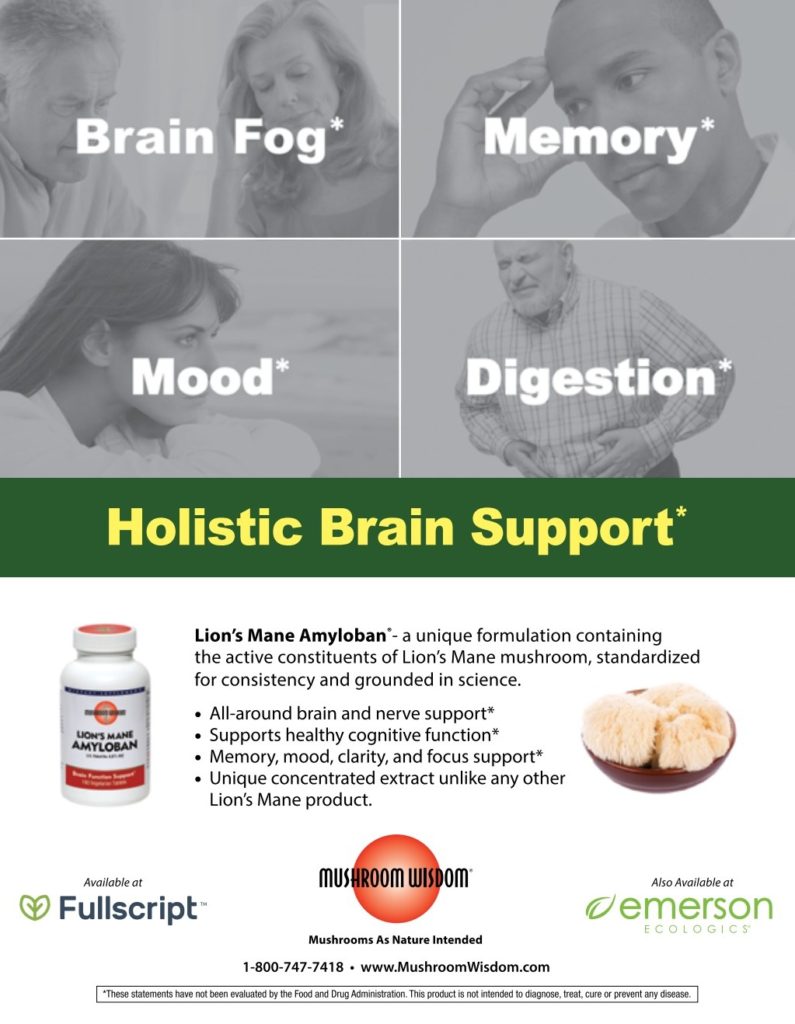The State of Alternative Cancer Care
Over the past two-year stretch of lockdowns and Covid-19 illness, many cancer patients avoided seeking medical care much to their detriment. Surgeries were postponed, chemotherapy and radiation treatment were delayed, and immunotherapy was often not even being offered. Cancer treatment remains nearly the same as it has been for several decades, and the outcome for too many patients with advanced cancers is abysmal. Of course, “precision” cancer care has occasionally brought great success given the plethora of new oncological pharmaceuticals. Still cancer care remains brutal and often does not yield remarkable quality-of-life survival despite being standard of care (SOC). Given the limited response available for some cancers, it is understandable that people look for alternatives. Unfortunately, approaching alternative cancer treatment is fraught with resistance from family and health professionals and uncertainty about its effectiveness, safety, and cost. Adding insult to injury alternative care is not covered by insurance and sometimes is outlawed. Yet does it really make sense to stay the course of a failed conventional cancer protocol?
This is essentially the same question we ask now that we were asking in 1987 when the Office of Technology Assessment (OTA) of the US Congress authorized a committee to study alternative cancer treatment. At that time patients and health professionals convinced House representatives that alternative medicine does have a place in cancer care and should not be outlawed. The OTA eventually published a lengthy monograph that touted the benefit of meditation and stress reduction, eating well, exercise, and good sleep. “Alternative therapies” such as mind-body medicine through visualization were accepted. Traditional medicine such as acupuncture was also recognized to be merit worthy. However, unusual diets were generally not given approval. Similarly, herbal therapies were thought to be lacking evidence. Of course, all unproven cancer cures were disdained. By and large, vitamin supplementation was thought to be useless and not infrequently detrimental to SOC. Nevertheless, as a result of the committee’s report Congress appropriated funding for the Office of Alternative Medicine in 1991. Ultimately this division of the NIH received ongoing funding as the Center for Complementary and Integrative Medicine, as it is known today. Despite the backlash from critics, alternative and integrative and naturopathic cancer care is now being recognized at the research level as well as in practice. In this issue we take a look at the state of alternative cancer care in 2022.
Cover Article: Linda Isaacs, MD, on Pancreatic Proenzymes and Cancer
When I first was introduced to alternative medicine in the late 1970s, I mentored under Leo Bolles, MD, in Washington State. Quite a few patients under his care were seeking an alternative to their cancer treatment. The two interventions Bolles always implemented was a change in diet and the prescribing of numerous vitamin supplements. For the diet the patient was asked to abstain from processed carbohydrates, reduce sugar and fat, move away from animal proteins except for fish, consume much more vegetables, and avoid alcohol and nicotine. Vitamin supplementation always included a strong dose of vitamin C, potassium/magnesium and other minerals, B vitamins, fish oil,and digestive enzymes. However, the digestive enzymes were not for digesting food; for food digestion Bolles recommended the use of betaine HCl. Instead the digestive enzymes, so-called “proteolytic enzymes,” were to be taken in between meals. The idea was that the enzymes would be absorbed from the digestive tract and make their way into the circulation. Somehow the enzymes would circulate and disrupt the cancer cell’s external and interior environment enabling the body’s immune system to better kill the cancer cell. Using high concentrations of trypsin, chymotrypsin, lipase, and pancreatin, supplemental enzymes could be routinely administered, raising enzymatic activity within the bloodstream. Who originated this application of enzyme therapy?
As Dr. Isaacs explains in this issue of the Townsend Letter as well as in the April 2022 issue of Integrative Cancer Therapies, enzyme treatment was devised by an embryologist over 100 years ago by the name of John Beard. Beard observed the similarity between the embryonic trophoblast and cancer. Both undergo rapid growth of relatively undifferentiated cells. Beard noted that at a certain time the trophoblast differentiates into the placenta and that transformation is signaled by the fetal pancreas’s first production of enzymes. Beard reasoned that a cancer grows unchecked because of the absence of this enzyme signaling in the body. His theory was briefly acclaimed in the early 1900s but was later criticized and largely ignored. However, others pursued his work making enzyme therapy a cornerstone of their cancer treatment.
The orthodontist William Donald Kelley self-diagnosed with pancreatic cancer treated himself solely with dietary changes and digestive enzymes. Based on his own case Kelley designed an entire healing system to manage cancer and other chronic illness. Kelley’s work eventually fell into the hands of a budding immunologist, Nicholas Gonzalez, who closely examined Kelley’s protocol and patient cases. Gonzalez modified Kelley’s protocol, ultimately treating thousands of patients with diet and pancreatic enzymes. He mentored Isaacs who collaborated on his research and treatment. What Gonzalez and Isaacs discovered is that for enzyme therapy to be most effective, the enzyme needed to be a “pro-enzyme” rather than the enzyme itself. For example, trypsin needed to be trypsinogen, while chymotrypsin was better as chymotrypsinogen. Pro-enzymes did not need to be manufactured; instead the pro-enzyme is readily available in raw pancreas tissue. It is the administration of high concentrations of pro-enzymes that Gonzalez and Isaacs theorized as the key to the cancer cell transforming back into a non-cancerous cell and/or engaging in apoptosis.
After reading Isaac’s article in this issue do take the time to read her 2022 Integrative Cancer Therapies article for the evidence supporting proteolytic enzymes’ role in treatment of cancer.1
Yes, Tree Bathing is Healing, but How About Visiting a Swamp?
Have you heard of the Great Black Swamp? It’s not exactly a tourist destination. And if you are not a resident of Ohio, you very likely have not known about it much less visited it. Originally it was a massive swamp covering much of Ohio, Indiana, and Michigan. Those traveling west to find new lands to settle were forced to traverse this overwhelming watery bog filled with insects, amphibians, snakes, wild cats, and copious bird species. Attempting to avoid malaria-carrying mosquitoes and quicksand, wagon trains took long detours but still were forced to ford streams. Folks were already frustrated encountering indigenous tribes but becoming lost in swampland led many to call for draining the swamp. At first it was a tedious process laying down clay tiles to create a drainage channel, but industrialization led to steam powered machines creating effective drainage of the Great Black, which is now a pittance of what it once was. The early settlers were amazed at the harvest they were to have farming with the swamp soil. Its peat composition made for the richest and highest quality produce and grain. Of course, once that peat swamp soil was exhausted, it was gone forever; and farms no longer were able to produce such bountiful vegetables and fruits without using chemical fertilizers and pesticides.
Why am I writing about swamps? In the July 4th issue of The New Yorker, the very talented novelist, Annie Proux, author of Postcards, The Shipping News, and Brokeback Mountain, writes about why our wetlands matter so much in her article titled, “Swamped.”2 Like her books her writing is beguiling, sweeping one into the swamp and experiencing its beauty, its dank, its darkness and light. When we talk about detoxification, the swamp is nature’s great detoxifier. It is the home to pitcher plant and beaver and warbler and heron and butterflies and muskrat and diverse trees and insects. When we worry about climate change, the swamp is a heavy-weight in sequestering carbon dioxide. Proux describes what it is like to step on mossy ground, sphagnum moss—“its billowy heave seemed to me more like a wave of dizziness before you pass out—a very slow falling sensation although you remain upright.”
We are fortunate that we do not need to cross the swamp on our daily commute nor do we need to live fretting about a snake bite or getting lost in a bog. But there is something so primordial to the swamp, we can experience life in its rawest form. Adventure takes many forms but we rarely consider the swamp. We need to appreciate its beauty as well as its vitality; the odors of the swamp awaken our senses. Looking for something to do this weekend, why not go visit a swamp near you?
Mistletoe by Steven Johnson, DO, and Nasha Winters, ND
Last year Drs. Johnson and Winters published a book on Mistletoe subtitled the Emerging Future of Integrative Oncology. If you are like me you have heard about using mistletoe in cancer care but are not familiar with its use. Mistletoe, an extract derived from the vine Viscum album, is administered in different formulations subcutaneously, intravenously, even directly into the tumor mass. The complexity of mistletoe administration requires a considerable level of knowledge and experience derived by taking coursework in anthroposophic medicine (AM) and being mentored by physicians dedicated to such work. Johnson and Winters together with Adam Blanning, MD, Marion Debus, MD, Paul Faust, ND, Mark Hancock, MD, and Peter Hinderberger, MD have distilled the essence of anthroposophic medicine as well as the application of mistletoe use into a highly readable 300-page book, suitable as a primer for the beginning AM physician and patient.
Perhaps the most unique aspect of mistletoe is the variability of the extract based on what tree the vine is growing on. The mistletoe growing on an apple tree is entirely different from the mistletoe growing on a fir or a pine or an oak or an ash. The difference lies in the lectin as well as the “viscotoxin” content of mistletoe extracts from different trees as well as manufacturers. Ash mistletoe has very high lectin content, apple extract more moderate content, and pine extract much lower content; however, based on whether Abnoba Viscum or Helixor or Iscador or Iscucin manufactures the mistletoe, lectin content varies greatly. Depending on an individual’s cancer status, the type of cancer, the staging, a particular mistletoe extract is selected to match what would be most appropriate for how the patient is doing. A strong fraxini (ash) extract may not be used on a patient who is cachectic and very enfeebled while such an extract may very well be used on a pediatric cancer or adult lymphoma patient. However, the authors are quick to point out that there is no exact protocol to spell out which mistletoe is used for each type of cancer. Instead there needs to be a holistic overview of the patient at every level, physical, mental, emotional, and spiritual to diagnose and determine the best treatment approach. Such diagnostics are very nuanced–three women with intraductal breast cancer would likely each be given a different extract and administration route. The thinking that goes on in homeopathic diagnosis very much takes place in anthroposophic diagnostics as well. In fact, it is not unusual to complement the mistletoe treatment with homeopathic formulations.
Mistletoe treatment is meant to complement conventional medicine and integrative/naturopathic oncology care. The side effects of chemotherapy and radiation treatment are definitely within the purview of mistletoe therapy; those patients concurrently receiving mistletoe extract experience far less severe adverse effects. Conventional chemotherapy and immunotherapy are frequently inadequate in achieving remissions and high quality of life; mistletoe extract enables patients to have better outcomes and experience joy of living. Of course, this is not a quick treatment approach. Mistletoe treatment goes on intensively for weeks, months, and maintenance for years. Fortunately, the patient is trained to administer the extract with subcutaneous injections at home; IV treatments still need to be done at the clinic. The treatment is not inexpensive, but it also is not outrageously expensive either; there are financial resources for patients to access because it is not covered by medical insurance.
For those readers who may not be interested in mistletoe, the chapters by Dr. Nasha Winters are particularly worthwhile for general oncology care. Her chapter on lab evaluation is particularly intriguing. Winters depends a great deal on what she labels the “trifecta” lab—quantitative CRP, LDH, and Sed Rate. CRP must be 1.0 or less, LDH must be 175 or less, and Sed Rate must be 10 or less. If these scores are higher and other reasons cannot be ruled out, it must be assumed that the cancer process is worsening or at least not improving. She would argue that a change in treatment would be necessary with the caveat that a lab test alone should never justify treatment change. Winters insists that the patient’s diet must be metabolically sound while doing mistletoe therapy. This means that carbs are greatly reduced and pristine fats are consumed to bring on fat burning and ketosis. She would argue that no cancer patient can improve without “metabolic flexibility” and insulin control.
Unfortunately, we do not have an article by Johnson and Winters in this issue. Instead I would strongly recommend purchasing a copy of Mistletoe available from www.steinerbooks.org.
References
1. Isaacs LL. Pancreatic proteolytic enzymes and cancer: New support for an old theory. Integr Cancer Ther. 2022;21:15347354221096077. doi: 10.1177/15347354221096077.
2. Proulx, A. Swamped. The New Yorker. 2022; July 4. 20-25.










